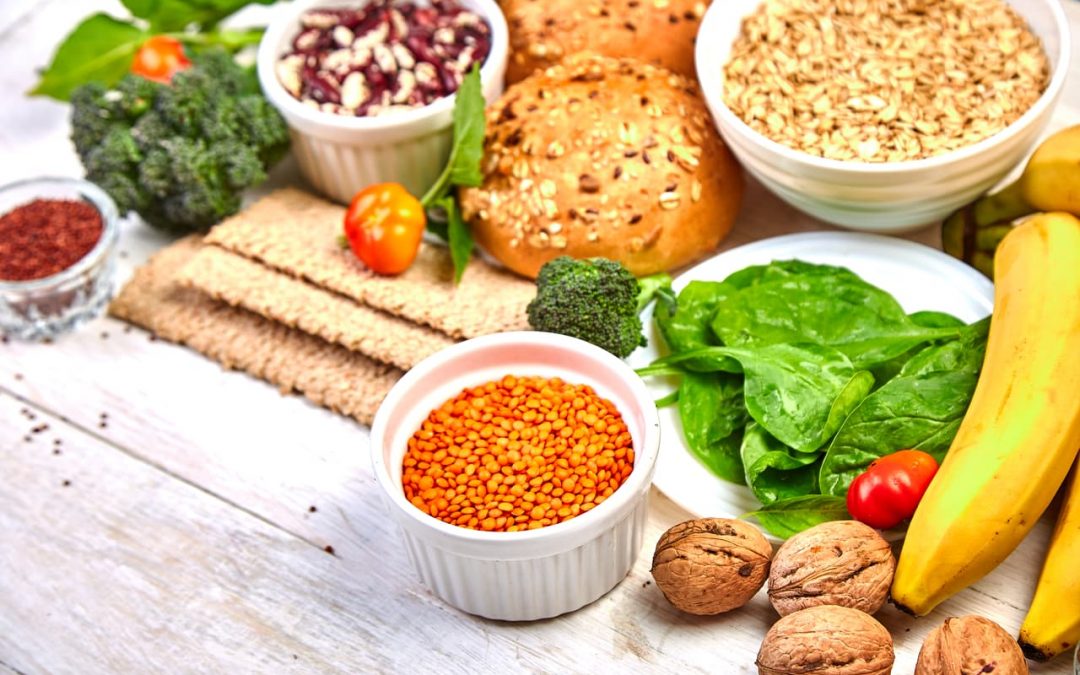According to a 2018 study, most Australian children and adults do not consume enough dietary fibre to meet the recommended amount set by the Australian Dietary Guidelines.
Given the importance of fibre to our digestive system and overall health, we should strive to incorporate more high-fibre foods into our daily diet. Fortunately, there are plenty of foods that score highly in both fibre content and taste.
In this article, we will discuss the importance of dietary fibre and its health benefits, and provide you with a list of eight high-fibre foods that you can easily incorporate into your meals or as a light snack.
What Is Fibre?
Dietary fibre includes the parts of plant foods your body can’t digest or absorb and can be divided into two types, which are:
Soluble fibre
Soluble fibre dissolves in water and forms a gel, slowing digestion and making you feel fuller. Soluble fibre also plays an essential role in lowering LDL (bad) cholesterol and regulating blood sugar levels in your body.
Sources of soluble fibre include fruits, vegetables, oats, barley, legumes, and soy-based products.
Insoluble fibre
Insoluble fibres do not dissolve in your digestive tract, and primarily speed up the passage of food through your body. It also increases stool bulk, which can be beneficial for people suffering from constipation and other related issues.
Sources of insoluble fibre include cereal grain bran (wheat, corn, rice), fruit and vegetable skins, nuts, seeds, and wholegrain foods.
Resistant Starch
Resistant starch is a carbohydrate that ferments in the large intestine rather than digest normally in the small intestine.
While resistant starch is not a traditional dietary fibre, it has a similar effect. Resistant starch encourages the growth of beneficial bacteria in the intestine and may aid in the reduction of cholesterol levels.
Sources of resistant starch include unripe bananas, beans, peas, lentils, whole-grains like oats and barley, as well as cooked & cooled potatoes and rice.
Why Is Fibre Important?
While fibre has little nutritional value, regularly incorporating it into your diet is highly beneficial to your digestive and overall health. As previously stated, fibre aids digestion and prevents constipation, helps in hunger control, regulates blood sugar levels, and lowers cholesterol.
A high-fibre diet can also help prevent and reduce the risk of certain diseases, as there is compelling evidence that increasing dietary fibre intake can lower the risk of heart disease, type 2 diabetes, weight gain, and bowel cancer.
In short, the benefits of having regular fibre in your diet include:
- Lower cholesterol levels
- Stabilises blood sugar levels
- Promotes bowel health
- Promotes healthy gut bacteria
- Better weight control
- Reduces risk of heart disease and certain cancers
For a comprehensive look at the health benefits of dietary fibre, have a look at a 2020 research paper that goes deeper into the subject here.
8 High-Fibre Foods You Should Add To Your Diet
The recommended daily fibre intake is 30g and 25g for men and women, respectively. Make sure to gradually increase your fibre intake to avoid any negative side effects, and drink plenty of water to aid digestion.
To help increase your daily fibre intake, here are some high-fibre foods that you can easily find at your local market.
1. Avocados
Besides being high in fibre, avocados are also a source of healthy fats. It’s a versatile fruit that can work in a salad or as a toast spread, so there are plenty of ways to add it to your diet.
2. Chia Seeds
Every 100g of chia seed includes 34g of fibre, making it one of the best high-fibre foods in fibre-to-weight ratio. Chia seeds work quite well ink drinks, baked goods, or as a dressing for other types of food.
3. Fruits
Fruits are both a tasty snack and a great source of fibre, with berries (blueberries, blackberries, strawberries, and raspberries) in particular being a notable option due to their low caloric value.
Other fruit also works well as an additional source of fibre, with the recommended intake being two slices of fruit a day. Be sure to eat the peel (such as those found on apples, pears, and peaches) as that’s where the fibre content is the highest.
4. Vegetables
Adding an additional vegetable dish to your lunch or dinner can help with dietary fibre intake, with broccoli, kale, carrots, spinach, and artichokes being popular high-fibre choices.
5. Nuts & Seeds
Nuts & seeds are high in healthy fats, protein, and fibre. Be sure not to get processed or pre-seasoned ones, as those may contain more calories than strictly necessary.
6. Whole-Grains
If you always have white bread, white rice, and regular pasta, try and switch to their whole-grain alternatives. They provide more dietary fibre, but whole-grain foods also contain more nutrients than their processed counterparts.
7. Beans
From lentil soup to shelled edamame, beans contain both fibre content and plant proteins, making them a popular choice as a nutritional alternative to meat.
8. Popcorn
While often associated as an unhealthy cinema food, all-natural popcorn contains a surprising amount of fibre (13g of fibre every 100g), which can help tremendously with fibre intake, given how easy it is to snack on.
Improve Your Dietary Fibre Intake With Help From Coolaroo Clinic
If you’re worried about your diet and how it may be affecting your health, our GPs at Coolaroo Clinic are here to help. We’re available to discuss any dietary concerns you may have and can offer nutrition consultations if need be. Feel free to contact us if you have any questions or would like to schedule an appointment.

